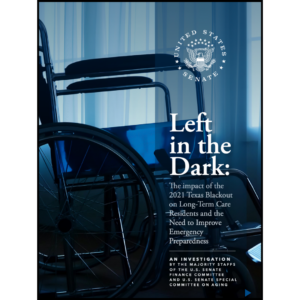Preventing Mold and Water Infiltration During and After Construction
|
| Mold and water infiltration in homes and businesses have been increasingly cited as causes of health problems, including respiratory ailments and neurologic impairments. Mold and water infiltration may also cause substantial property damage necessitating remedial work. Furthermore, insurance carriers are often unwilling to pay for mold claims, leading to lawsuits when damages are significant. New construction materials and modern building techniques to shorten construction project schedules have contributed to the significant rise in mold and water infiltration claims. The resulting high-profile lawsuits involving substantial verdicts that have emerged throughout the country in both residential and commercial settings, have cast a spotlight on mold and “sick building”‘related claims. The media have steadily reported on personal injuries from mold exposure and the dangers of living or working in sick buildings. The increased awareness of health-related issues arising from mold, especially among the elderly, coupled with the construction boom of new long-term care facilities, has placed them at particular risk of facing mold or water infiltration’related claims. Whether these claims are simply a current trend or will remain a fertile area of construction defect litigation is uncertain, but nursing homes can take preventive measures to protect themselves against these risks before claims arise. The key to a successful protection plan is to prevent water intrusion and mold growth during construction and to have a system in place to deal with a mold or water event during or after construction. First, all construction contracts, whether for the renovation of an existing nursing home or the construction of a new building, should contain a coordinated mold and water infiltration prevention plan that obligates construction team members to specify materials, construction techniques, and project phasing to reduce these risks. Project agreements should also contain specific requirements for dealing with a mold occurrence, including provisions for confidentiality, insurance notification, cleanup methods, etc. The following is a brief example of contractual language that can be inserted into a nursing home’s agreement with its contractors (and similar language can be inserted into the design professionals’ agreements):
Prior to commencing any Work on the Project, the Contractor warrants that it shall establish written procedures to ensure that the Project will be constructed watertight at all interior spaces, including, but not limited to, all interior areas above and below grade…. The Contractor shall submit the Water Infiltration Prevention Procedures…. The Contractor shall also ensure that Contractor and Contractor’s subcontractors and other entities providing work, labor, or services for the Project shall conform their work and services in compliance with the Water Infiltration Prevention Procedures. Project agreements should also contain indemnity and insurance provisions that protect the owner and property from water infiltration and mold growth liability during and, in some cases, after construction. Second, since insurance coverage is often at the heart of mold and water infiltration claims, all policies, including those of the construction team members, should be reviewed before undertaking a renovation or new construction project. While most policies include broad exclusions for mold and certain types of water infiltration, claims can often be couched in terms of events that are, in fact, covered by insurance. To take advantage of available insurance, it is imperative to know exactly what events are covered and the notice requirements for making such claims. Construction counsel should be consulted before making claims for instances of mold or water infiltration to ensure that such claims receive the best possible chance for coverage. Third, because the best way to avoid mold claims is to prevent mold, construction plans should address all avenues of water infiltration, since mold needs water to grow. The construction documents are frequent sources of design errors and omissions that lead to water infiltration and subsequent mold growth. Water infiltration problems can often be traced to building orientation, grading and natural topography, and subsurface conditions that are not properly accounted for in the design. The benefits of different wall systems, flashing, and ventilation should be carefully evaluated. Contractors should also have a proven installation record with the specified systems. Nursing homes should be especially aware when installation requires near-perfect contractor workmanship. High moisture and humidity levels are an “invisible” contributor to mold growth. Common interior design factors that minimize vapor buildup include specifications that have sufficiently sized air-conditioning and humidifying equipment to keep relative humidity levels at 30 to 60%. Locations for HVAC equipment should be designed so that it is easily serviceable. Product representatives should also be consulted on roof, window, and fatade details to ensure proper detailing and warranty coverage. Fourth, sequencing and coordination among the construction trades are critical. Phased construction, which calls for interior work on portions of a building to be accomplished while other portions of the building may not be fully enclosed, is often a cause of mold and water infiltration, and its effects may not be noticed until years later. Phased construction can also lead to significant water events during construction, in which water may enter concrete beyond acceptable limits, ruin materials on the project site, and cause mold growth on Sheetrock, finished floors, walls, and carpeting. Since water will often find its way into a building that is not fully enclosed, phased construction should be limited or, in some cases (especially in which patients/residents may be exposed to a water event during a renovation), excluded from nursing home construction plans completely. Finally, after the project is completed, the design and construction team should be contractually required to undertake a thorough examination of all project areas to ensure that, among other things, the building envelope (roof, windows, and exterior walls) is properly sealed and working, leaks do not exist, and there is no mold or water infiltrating the project. Contractors should also be required to achieve balance and moisture control within the nursing home facility by properly adjusting the HVAC systems. The design team and the facility’s consultants should be required to review and approve all of the project systems after completion and ensure that all warranties are properly in place and are in force. Once staff and residents occupy a renovated or new facility, the building managers and nursing home employees should pay close attention to any event that might cause water to infiltrate any part of the facility. Employees should be instructed to report any incidents of mold or water infiltration to management. Management should have a plan to investigate and repair any problem, as well as handle reporting, insurance, and confidentiality issues. Proper planning, contracting, and diligence can minimize water infiltration and mold’related claims in your facility’s renovation and construction projects. David J. Pfeffer, Esq., is Partner at Arent Fox in New York, where he specializes in construction law, representing owners, design professionals, and developers in matters ranging from project planning and contract preparation to dispute resolution. He can be reached at (212) 484-3948. To send your comments to the author and editors, please e-mail pfeffer0506@nursinghomesmagazine.com. |
Related Articles
Topics: Articles , Facility management , Operations , Risk Management











